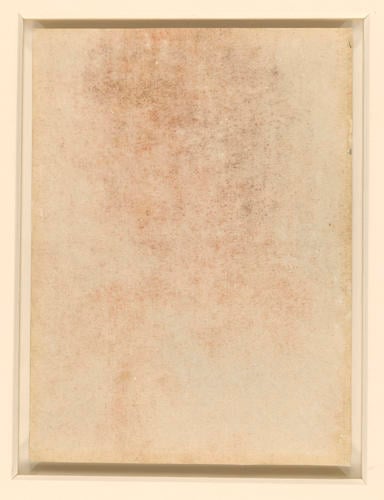-
1 of 253523 objects
The head of an old bearded man c.1517-18
Black chalk | 21.3 x 15.5 cm (sheet of paper) | RCIN 912499

Leonardo da Vinci (1452-1519)
The head of an old bearded man c.1517-18

Leonardo da Vinci (1452-1519)
The head of an old bearded man c.1517-18


-
A drawing of the head of an old man, in profile to the right. He has a long pointed nose, a long flowing curly beard and moustache, and hair that seems to be twisted into two plaits. Melzi's number 29.
Early in his career Leonardo fixed on two standard male types, who thereafter recur repeatedly in his drawings and paintings: an adolescent with refined features, and an older man with aquiline nose, prominent chin and beetling brow. In the last decade of his life he produced a number of independent drawings of such heads, exercises in form and draughtsmanship simply for his own satisfaction.
Though the profile here is Leonardo's usual toothless old man, he is far from pitiful. The neck is vigorously muscular, the beard luxuriant, and the long hair is twisted into plaits reminiscent of Leonardo's Leda of the previous decade (912515-18) or of his master Verrocchio's drawings of many years before. The hair suggests that Leonardo intended a certain exoticism, as if the man were a magus, and the conspicuously hooked nose would be in keeping with such a conception.
The drawing can be dated to the last years of Leonardo's life. We know that Leonardo himself had a full beard at this time, and an old bearded man drawing an old bearded man cannot have been oblivious to an element of self-portraiture. Indeed a copy of the drawing executed by Lucas Vorsterman in the 1620s (British Museum, inv. 5227-4), soon after the present sheet arrived in England, is inscribed as a portrait of Leonardo, reflecting the common conception of Leonardo (by then fully established) as a mystical seer.
Text adapted from M. Clayton, Leonardo da Vinci: The Divine and the Grotesque, London, 2002Provenance
Bequeathed to Francesco Melzi; from whose heirs purchased by Pompeo Leoni, c.1582-90; Thomas Howard, 14th Earl of Arundel, by 1630; probably acquired by Charles II; Royal Collection by 1690
-
Creator(s)
Acquirer(s)
-
Medium and techniques
Black chalk
Measurements
21.3 x 15.5 cm (sheet of paper)
Object type(s)
Other number(s)
RL 12499Alternative title(s)
The head of an old bearded man in profile